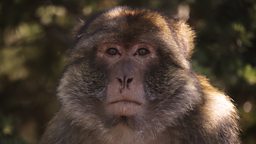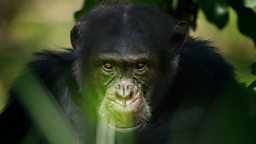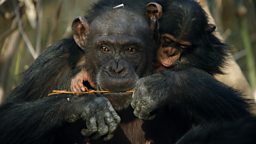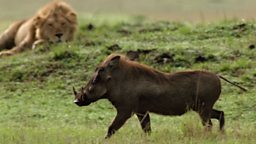Kidnapping babies and other strange meerkat behaviour
Meerkats are one of the most well loved animals in the UK, and around the world.
Meerkats have incredibly complex behaviour, which can also be very surprising
Maybe some of the appeal, apart from the incredibly cute babies, is the fact that – like us – they are social animals living with extended family and even unrelated friends. Such social groupings are relatively rare in nature, some others include: most monkeys and apes, many dog species, some whales and dolphins, some birds and of course ants and of course some bees (e.g. honey bee) and wasps.
These groups are united by some interesting behaviours – like making friends, helping each other and resolving conflict. Because of this meerkats have incredibly complex behaviour, which can also be very surprising – as leading professor of social behaviour, and former meerkat biologist, Professor Andy Russell explains...

Meerkat alpha females control who gives birth
Meerkat mums typically have 4 pups in a litter. But Maghogho’s family had 7. Very unusually Maghogho had allowed her sister to give birth at the same time as her.
The result was that none of the pups had enough to eat and the other adults help was spread too thinly.
This is probably because she was a new leader of a new group. New groups are typically formed by a few related females of similar age and a small number of males from other groups, again of similar age. The lack of major age differences within the female and males means there isn’t an obvious hierarchy. Instead the female who wants to be alpha needs to try to stop the other females from breeding. But in Maghogho’s case she didn’t successfully manage this with Pretty. The result was that none of the pups had enough to eat and the other adults help was spread too thinly.
Later in the film Maghogho is much more established as the leader and does evict her other sister, Dragonfly, causing her to lose her litter. Although this seems harsh, this is much more typical behaviour of an alpha meerkat. This time Maghogho’s pups had enough food and help from the other adults. Evicted females are typically allowed to come back once the alpha has given birth, as is the case with Dragonfly, and they often become the main babysitters of the dominant’s pups.

Losing pups and Maghogho the hero
Maghogho’s family seem pretty bad at looking after their pups at first. However, they didn’t have an easy task. It is unusual for meerkats to live in a territory broken up by salt pans. Normally meerkats could move short distances to find food and any pups left behind make a ‘lost pup’ cry and the adults easily hear it and return to save it.
But what was incredible was that Maghogho went back to look for the pups
But Maghogho was forced to cross much larger areas of open ground, and this needs a coordinated effort. New groups are not as united as older more established groups, and are also often small in number, with less eyes to look after the pups and look out for danger. Maghogho’s group were on the edge of survival themselves, focused on getting new food and escaping predators, not looking after pups. But what was incredible was that Maghogho went back to look for the pups even though she would not be able to hear them calling. Maybe because all pups were lost at once following an extreme event, it led to her searching for them back across the pan. I don’t know why the other group members didn’t join her though - perhaps they were too scared!

Maghogho the warrior
Meerkats are territorial, and although they have quite large ranges of at least a 1km x 1km, they commonly encounter neighbouring groups. When this happens, it invariably leads to a characteristic ‘war dance’ with each group bounding towards each other, tails raised and growling. Often it ends in a stand-off, until one group backs down, but fighting is also quite common.
Filming an apparent kidnapping event is incredibly rare
Tonga Tona the kidnapper
Kidnapping is very rare in animals. So why Thonga Tona took the rivals’ pups is not known, although we do have a few theories! He may have been trying to increase the size of his group without paying the extensive costs of rearing the offspring from birth (larger groups help meerkats hold on to territories). It might have been that he had high levels of hormone that are associated with pup care, and that following the loss of his own pups, the drive to care for pups leads one of them to try to care for those of another group. It is hard to know for sure! Filming an apparent kidnapping event is incredibly rare and provides scientists with new insights into the potential drivers of this unusual behaviour.

the Dynasties team manage to film both their incredible behaviour and also capture other events that had never been filmed before!
It’s a long game…
Only by spending years studying animals like meerkats can you understand their incredibly complex behaviours. In fact, the more one studies them, the more complex their behaviour appears. Prof Tim Clutton-Brock at the University of Cambridge and his team spent years observing Meerkat groups in the northern Cape of South Africa, starting all the way back in the 1990s, and almost everything we know about their behaviour stems from his team’s work over the past 30 years. Their work helped the Dynasties team in Botswana to understand the behaviour of Maghogho and her group. By spending months with them, and following them day after day, the team managed to film both their incredible behaviour and also capture other events that had never been filmed before!





























